Rumson and the First World War

One
hundred years ago, young men from Rumson trained, went “Over There” and fought for their country during World War I. One hundred and fifty went from what was at that time a very small town to serve in the Great War. Seven of these men did not survive their service. The names of these seven are honored at the top of the Rumson War Memorial monument in Victory Park and the names of those who served and survived are also listed.
 The war ended with an armistice signed on November 11, 1918. To commemorate this great victory, Bertram and Mary Owen Borden created Victory Park and presented it to the community on July 4, 1920. It was dedicated to the Rumson men who served during the war. The War Memorial, designed to be a principle feature of the park, was unveiled on that day. The monument contained the following inscription cut into the stone,
“In the Great War these men of Rumson gave their lives - Samuel Harriot Compton, George Halton, Angelo Lagroteria, William Henry Meeker, John Nelson, Edward Reid, and Ellsworth Rex.” And beneath the words, “These also served under the flags of our country and our allies”, the names of all who served are listed. These 150 men, roughly 10 percent of Rumson’s entire population, represented a cross section of the town’s residents.
For some men, an estate in Rumson was home, and for others it was a place of work. Some names are familiar today as street names or names of old estates. Most returned to live out their lives in Rumson, and some of their descendants are residents in current times.
The war ended with an armistice signed on November 11, 1918. To commemorate this great victory, Bertram and Mary Owen Borden created Victory Park and presented it to the community on July 4, 1920. It was dedicated to the Rumson men who served during the war. The War Memorial, designed to be a principle feature of the park, was unveiled on that day. The monument contained the following inscription cut into the stone,
“In the Great War these men of Rumson gave their lives - Samuel Harriot Compton, George Halton, Angelo Lagroteria, William Henry Meeker, John Nelson, Edward Reid, and Ellsworth Rex.” And beneath the words, “These also served under the flags of our country and our allies”, the names of all who served are listed. These 150 men, roughly 10 percent of Rumson’s entire population, represented a cross section of the town’s residents.
For some men, an estate in Rumson was home, and for others it was a place of work. Some names are familiar today as street names or names of old estates. Most returned to live out their lives in Rumson, and some of their descendants are residents in current times.
The seven young men who perished during the war ranged from one who volunteered as soon as the drums of war began to sound to one who only left home as the final guns were firing. Some had a patriotic and military fervor and volunteered, and some were forced to leave careers, parents and sweethearts when they were drafted and inducted into the United States Armed Services. Some were officers, and some were enlisted men. They ranged in age from twenty-one to thirty-one. Two were members of Holy Cross Church, one was a member of the Rumson Presbyterian Church, one was a member of St. George’s-by-the-River and one was a member of the Goodwill Methodist Episcopal Church.
They came from different backgrounds. Some men lived in Oceanic and some lived on Rumson Road or along the river. Some were New Yorkers, living in Rumson at the second home of their family or employer. They were college students, gardeners, a chauffeur and an electrician. They lived on Second Street, Black Point Road, Bellevue Avenue, West River Road and Rumson Road. Some of their Rumson homes are still standing, and some, like these young men, are long gone. Three were immigrants, coming from Ireland, Italy and Sweden, and one had only been here for five years before being inducted. Two were killed in battle; two died in non-battle related accidents; and three died of pneumonia, victims of the Spanish Influenza Pandemic of 1918, which killed more American soldiers and sailors than the total killed in battle.
One hundred years have passed, and the names of Rumson’s World War I veterans are still visible on their Memorial Monument. They and their brave service will never be forgotten.
IN THE GREAT WAR THESE RUMSON MEN GAVE THEIR LIVES
Corporal William Henry Meeker
 William Henry Meeker grew up in New York and on an estate on West River Road in Rumson. He was a patriotic young man who had participated in the Harvard Regiment and ROTC while a student at Harvard College. He also did training at the Thomas-Moore Aircraft Company during the summer before his senior year. He was an excellent writer who had already been published in periodicals and the press and had a large personal library which he valued. As a member of the Harvard College Class of 1917, he served as president for the Harvard Crimson publication. He enlisted in the Signal Officers’ Reserve Corps Aviation Section in the spring before graduation. In June 1917, he enlisted for service in the Lafayette Flying Corps of the French Army because the United States had not yet become enmeshed in the war. He received training at the French School of Aviation at Avord and completed his combat training in less than three months.
William Henry Meeker grew up in New York and on an estate on West River Road in Rumson. He was a patriotic young man who had participated in the Harvard Regiment and ROTC while a student at Harvard College. He also did training at the Thomas-Moore Aircraft Company during the summer before his senior year. He was an excellent writer who had already been published in periodicals and the press and had a large personal library which he valued. As a member of the Harvard College Class of 1917, he served as president for the Harvard Crimson publication. He enlisted in the Signal Officers’ Reserve Corps Aviation Section in the spring before graduation. In June 1917, he enlisted for service in the Lafayette Flying Corps of the French Army because the United States had not yet become enmeshed in the war. He received training at the French School of Aviation at Avord and completed his combat training in less than three months.
 On September 11, 1917, while practicing a vertical spiral, his plane’s engine stalled and he was killed instantly when the plane hit the ground. He was buried the same day in Pau, France. Before leaving for the war, he left instructions for his books to be donated to Harvard if he did not come home. When his grieving parents saw the value of the bequest to Harvard, Henry and Jenny Meeker devoted themselves to creating a library for the residents of Rumson. The life-sized portrait of William Henry Meeker in full military uniform has greeted patrons from the day that the Oceanic Free Library opened its doors in 1920.
On September 11, 1917, while practicing a vertical spiral, his plane’s engine stalled and he was killed instantly when the plane hit the ground. He was buried the same day in Pau, France. Before leaving for the war, he left instructions for his books to be donated to Harvard if he did not come home. When his grieving parents saw the value of the bequest to Harvard, Henry and Jenny Meeker devoted themselves to creating a library for the residents of Rumson. The life-sized portrait of William Henry Meeker in full military uniform has greeted patrons from the day that the Oceanic Free Library opened its doors in 1920.
Private Angelo Lagroteria
Angelo Lagroteria was born on August 8, 1895 in Amaroni, Calabria, Italy. Angelo was employed as a gardener in Rumson. His father, Dominic, was also a gardener. Many men from Amaroni served Rumson estates as gardeners and families would often send back to town for other friends and family members to join them because there was plenty of work on local estates for men trained in farming and landscape management. Angelo volunteered to serve in the war and was inducted on November 12, 1917, just one year before the Armistice. After training, he was sent to France on April 2, 1918 aboard the transport ship Aquitania. He was in Company D of the 30th Infantry, which was attached to the French forces fighting the German offensive along the Marne River. On July 21, 1918, just two weeks before his 23rd birthday, Angelo Lagroteria was killed near Mezyon on the Marne River in France in the Second Battle of the Marne. It was the last major German offensive battle of World War I. The battle raged from July 15 to August 6, 1918, and thousands of soldiers were killed. Private Lagroteria was among those who died from wounds sustained there. The Lagroteria family attended Holy Cross Church, and Father Michael Callahan celebrated a requiem mass for Angelo early in August. The Asbury Park Press stated that Angelo was the first member of the Holy Cross parish to lose his life in the war.
Private John G. Nelson
John G. Nelson was born in Ofraby, Sweden and came to the United States in 1900 when he was thirteen years old. In 1915, according to the NJ Census, he was single, living in Rumson and employed as a chauffeur for the Herbert W. Terrell family at both their Old Elm Tree estate on Rumson Road and their home in Manhattan.
 His June 5, 1917 draft card listed his address as 801 Lexington Avenue in New York, and his legal status as “alien” and not as a US citizen. When he was inducted into the Army, he was assigned to the 306th Field Artillery Regiment, 77th Division and sent overseas. Less than four months after his arrival in France, he was killed in action on August 18, 1918. It was just four days before his 31st birthday and three months before the war was over. His death was the result of injuries at a battle on the Les Pres farm near Chery Chartreux in the Province of Aisne, France.
He was buried in the Oise-Aisne American Cemetery in Seringes-et-Nesles, France with more than 6,000 other American casualties. The cemetery is about 70 miles northeast of Paris. It is a long way from Ofraby, Rumson and New York. His friend, Ebba Nylund, in New York was notified of his death.
His June 5, 1917 draft card listed his address as 801 Lexington Avenue in New York, and his legal status as “alien” and not as a US citizen. When he was inducted into the Army, he was assigned to the 306th Field Artillery Regiment, 77th Division and sent overseas. Less than four months after his arrival in France, he was killed in action on August 18, 1918. It was just four days before his 31st birthday and three months before the war was over. His death was the result of injuries at a battle on the Les Pres farm near Chery Chartreux in the Province of Aisne, France.
He was buried in the Oise-Aisne American Cemetery in Seringes-et-Nesles, France with more than 6,000 other American casualties. The cemetery is about 70 miles northeast of Paris. It is a long way from Ofraby, Rumson and New York. His friend, Ebba Nylund, in New York was notified of his death.
Private Charles Ellsworth Rex, Jr.
 Charles Ellsworth Rex, Jr. was 20 years old when he volunteered to serve in World War I. The son of Charles E. Rex, Sr. and Frances Hennessey Rex, he grew up on Black Point Road as one of ten children. He was inducted into the United States Army on April 10, 1918 and was assigned to the transportation department of the 13th Service Corps at what was then called Camp Alfred Vail. Camp Vail was located on the former site of the Monmouth Park Race Track, which had been abandoned when betting on horses was banned in New Jersey. Originally called Camp Little Silver, it was leased by the Army as a temporary facility to train the 1st and 2nd Reserve Signal Battalions in anticipation of the United States entry into the war. Private Rex was assigned to drive a tractor on the post, and he was not satisfied with this as his participation in the war. He made several requests to be sent over to the front lines in France, but he was told that his service in the transportation department was too valuable and that he could not be spared at Camp Vail. On August 24, 1918, Private Rex was with two other soldiers on his way home for a visit in Rumson. Private Rex was in the back seat when the car was involved in a rear-end collision. He was thrown from the car and fractured his skull. He was rushed to the Camp Vail hospital and died three hours later. Ellsworth Rex was just 21 years old. As was the custom, his body was returned to his home in Rumson, and a military funeral took place at the Goodwill Methodist Episcopal Church. He was buried in the Fairview Cemetery in Middletown. His brother, Barron Rex, served in France as a member of Naval Battery, No. 1. Barron’s name is engraved on the Rumson War Memorial among those who survived.
Charles Ellsworth Rex, Jr. was 20 years old when he volunteered to serve in World War I. The son of Charles E. Rex, Sr. and Frances Hennessey Rex, he grew up on Black Point Road as one of ten children. He was inducted into the United States Army on April 10, 1918 and was assigned to the transportation department of the 13th Service Corps at what was then called Camp Alfred Vail. Camp Vail was located on the former site of the Monmouth Park Race Track, which had been abandoned when betting on horses was banned in New Jersey. Originally called Camp Little Silver, it was leased by the Army as a temporary facility to train the 1st and 2nd Reserve Signal Battalions in anticipation of the United States entry into the war. Private Rex was assigned to drive a tractor on the post, and he was not satisfied with this as his participation in the war. He made several requests to be sent over to the front lines in France, but he was told that his service in the transportation department was too valuable and that he could not be spared at Camp Vail. On August 24, 1918, Private Rex was with two other soldiers on his way home for a visit in Rumson. Private Rex was in the back seat when the car was involved in a rear-end collision. He was thrown from the car and fractured his skull. He was rushed to the Camp Vail hospital and died three hours later. Ellsworth Rex was just 21 years old. As was the custom, his body was returned to his home in Rumson, and a military funeral took place at the Goodwill Methodist Episcopal Church. He was buried in the Fairview Cemetery in Middletown. His brother, Barron Rex, served in France as a member of Naval Battery, No. 1. Barron’s name is engraved on the Rumson War Memorial among those who survived.
Private George Joseph Halton
On May 10, 1913, George Joseph Halton disembarked from the Baltic to begin his new life in America. George was 23 years old when he came from Kingscourt, a town in County Caven, Ireland. There were large estates in that area of Ireland where he may have gotten useful experience which secured him a gardener position in Rumson. His brother, Thomas, was also in Rumson residing on Bellevue Avenue. George was employed by Howard S. Borden and his wife, Edith, who sought skilled horticulturalists from across the sea to serve on their Old Oaks estate. Old Oaks was a huge estate on West River Road that included farms, gardens and a polo field. Within the next year, Edith Borden became one of the founders of the Rumson Garden Club. Only five years after his arrival, George Halton, not an American citizen, found himself drafted into the United States Army on September 3, 1918 in the waning weeks of the war. He was assigned to 40 Company 153 Department Brigade and only survived 25 days before dying of bronchial pneumonia. The Spanish Flu was not mentioned, but it was rampant in the training camps. Private Halton was just 28 years old. In memory of the Rumson men who lost their lives in the war, Bertram Borden (Howard’s brother) and his wife Mary created Victory Park with its Rumson War Memorial, which they donated to the community on July 4TH, 1920. Bertram and Mary lived at the Riverlands estate, which adjoined Old Oaks. They would have known George Halton.
Private Edward Albert Reid
 Edward Albert Reid grew up on the corner of Second Street and Church Street. He was 23 years old and a member of Holy Cross Church. His mother, Ellen Reid, had died in 1915, and he was unmarried and living with his father, Thomas Reid. He had four brothers: Frank and Joseph of Oceanic and Bartholomew and James of New York City. Edward Reid was building a career as an electrician working for his brother Frank at his electrical contracting company in Red Bank. He had a history of “heart trouble,” but that did not prevent him from being drafted into the Army on July 25, 1918, as the War was winding down.
Edward Albert Reid grew up on the corner of Second Street and Church Street. He was 23 years old and a member of Holy Cross Church. His mother, Ellen Reid, had died in 1915, and he was unmarried and living with his father, Thomas Reid. He had four brothers: Frank and Joseph of Oceanic and Bartholomew and James of New York City. Edward Reid was building a career as an electrician working for his brother Frank at his electrical contracting company in Red Bank. He had a history of “heart trouble,” but that did not prevent him from being drafted into the Army on July 25, 1918, as the War was winding down.
 He was assigned to Company E, Eighty-seventh division, 312th Engineers, and had three weeks of training in Camp Dix before being sent to France.
He was on his way to the front when he was struck down by the Spanish Flu.
He died of pneumonia on October 27, 1918, only three months after leaving home.
He was buried in the French cemetery at La Rochelle. After the War, Edward Reid’s body was exhumed and returned home. Worden’s Funeral Home conveyed his body to his Oceanic home, and a funeral requiem mass was celebrated at Holy Cross Church by Father Michael Callahan. His remains were then taken to Holy Cross Cemetery in Brooklyn to be laid to rest in the family plot where his mother and siblings who had predeceased him were buried.
He was assigned to Company E, Eighty-seventh division, 312th Engineers, and had three weeks of training in Camp Dix before being sent to France.
He was on his way to the front when he was struck down by the Spanish Flu.
He died of pneumonia on October 27, 1918, only three months after leaving home.
He was buried in the French cemetery at La Rochelle. After the War, Edward Reid’s body was exhumed and returned home. Worden’s Funeral Home conveyed his body to his Oceanic home, and a funeral requiem mass was celebrated at Holy Cross Church by Father Michael Callahan. His remains were then taken to Holy Cross Cemetery in Brooklyn to be laid to rest in the family plot where his mother and siblings who had predeceased him were buried.
2nd Lt. Samuel Harriot Compton
Samuel Harriot Compton was born in Rumson on September 12, 1894. His parents, Dr. William P. and Jean Harriot Compton were New Yorkers who also had a home in Rumson, as did his grandfather, Samuel J. Harriot. His father died in 1910 at age 35 and he had a younger sister who died when she was only seven. Samuel was a senior at Princeton University on June 5, 1917 when he registered for the draft.
After graduation, he was inducted into the United States Army on August 15, 1917 and attended officers’ training school at Fort Meyer, Virginia.
He also spent time at Camp Lee, VA, Camp Sevier, SC and Camp Dix, NJ.
In January, 1918 he boarded a transport ship to France and on February 1st, he reported to the Headquarters of the American Expedition Forces (AEF).
 On March 30, 1918 he was assigned to a newly created division charged with renting, leasing, and requisitioning all lands and buildings required by the AEF in France.
Their activities continued after the war and were expanded to include AEF needs in other countries.
On February 3, 1919, three months after peace was declared, Samuel Compton died at a French Military Hospital in Grenoble, France.
His record cites the cause of his death as “lobar pneumonia.” This was often the immediate cause of death for victims of the Spanish Flu, the pandemic that killed between 50 and 100 million people world-wide. Lt. Compton was buried at Aisne-Marne American Cemetery along with more than 2,000 other American “doughboys”. His body was eventually returned to the U.S. and he is buried at Rock Creek Cemetery in Washington, DC. An endowed scholarship was created in his memory by the Princeton University Class of 1917. The Samuel Harriot Compton Class of 1917 War Memorial Scholarship still exists. He was the only member of St. George’s-by-the-River lost in WWI. There is a plaque on the back wall of the chantry of the church dedicated in memory of his grandfather, Samuel T. Harriot, a warden of the Parish, and his grandson, Samuel Harriot Compton, who died in the service of his country. Samuel’s brother, William P. Compton, also served in The Great War, and his name is engraved on the Rumson War Memorial among those who survived.
On March 30, 1918 he was assigned to a newly created division charged with renting, leasing, and requisitioning all lands and buildings required by the AEF in France.
Their activities continued after the war and were expanded to include AEF needs in other countries.
On February 3, 1919, three months after peace was declared, Samuel Compton died at a French Military Hospital in Grenoble, France.
His record cites the cause of his death as “lobar pneumonia.” This was often the immediate cause of death for victims of the Spanish Flu, the pandemic that killed between 50 and 100 million people world-wide. Lt. Compton was buried at Aisne-Marne American Cemetery along with more than 2,000 other American “doughboys”. His body was eventually returned to the U.S. and he is buried at Rock Creek Cemetery in Washington, DC. An endowed scholarship was created in his memory by the Princeton University Class of 1917. The Samuel Harriot Compton Class of 1917 War Memorial Scholarship still exists. He was the only member of St. George’s-by-the-River lost in WWI. There is a plaque on the back wall of the chantry of the church dedicated in memory of his grandfather, Samuel T. Harriot, a warden of the Parish, and his grandson, Samuel Harriot Compton, who died in the service of his country. Samuel’s brother, William P. Compton, also served in The Great War, and his name is engraved on the Rumson War Memorial among those who survived.
This document is a collaboration by Thomas Clark and Roberta “Bobbie” Van Anda.

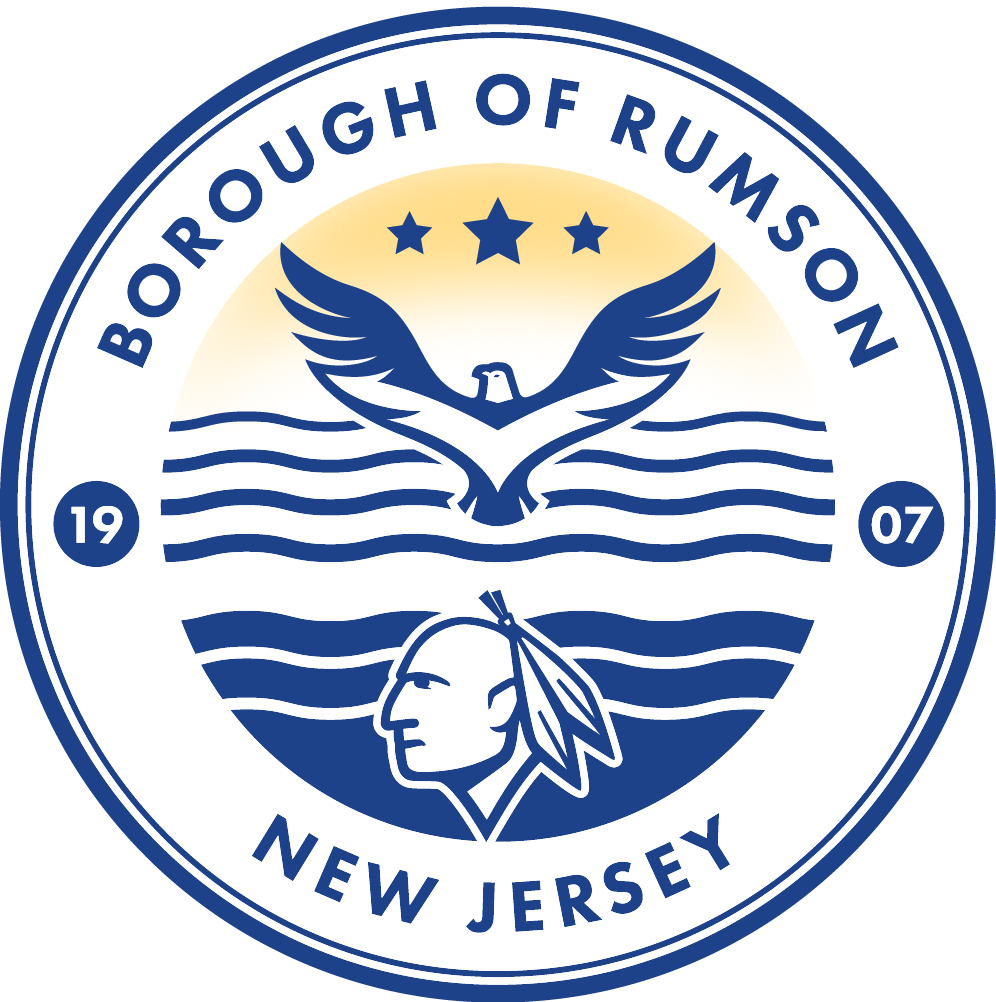



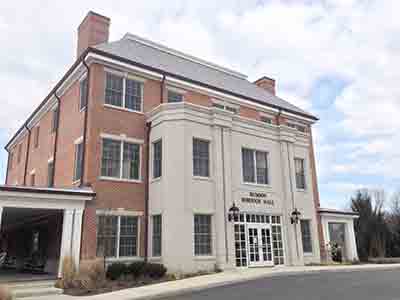
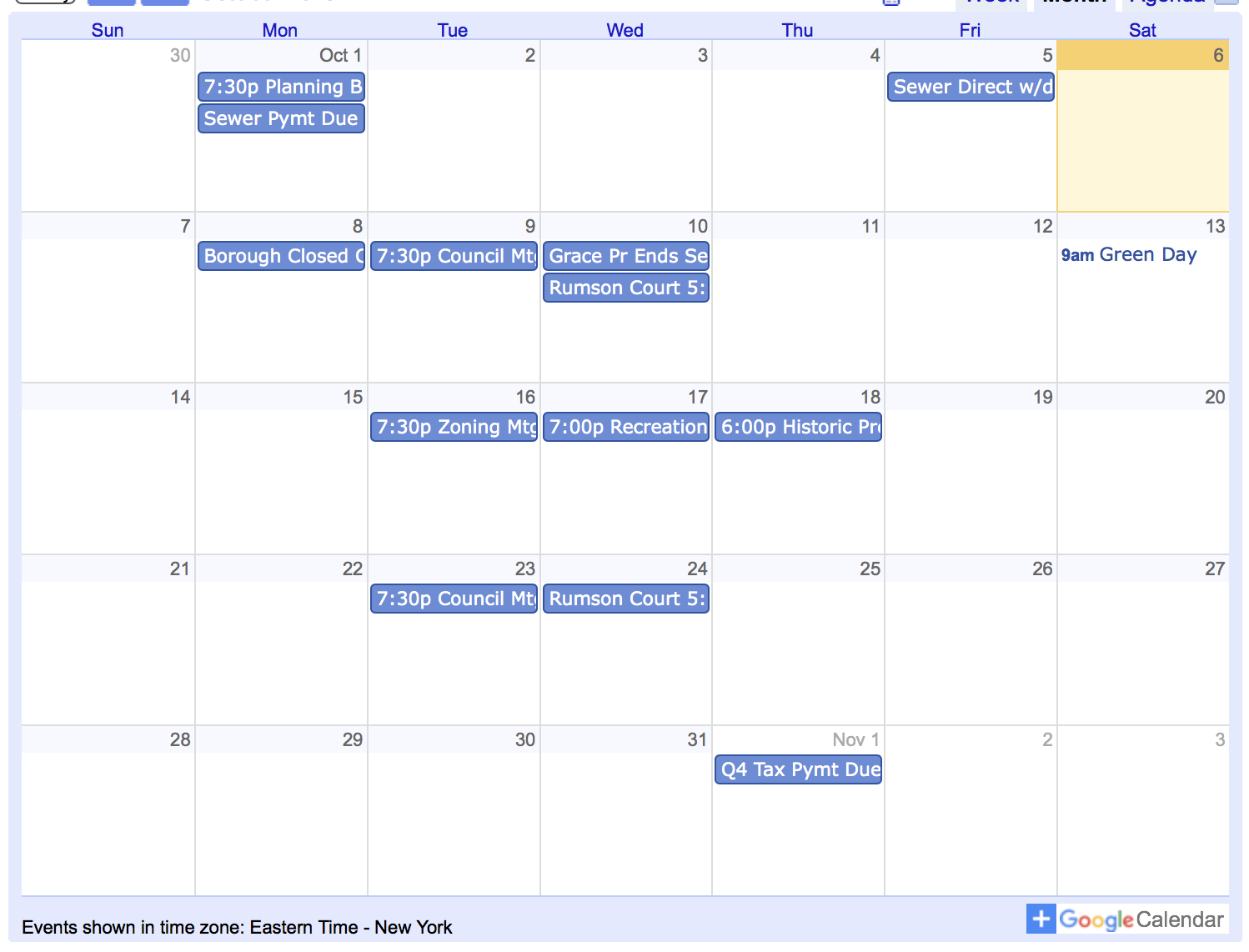
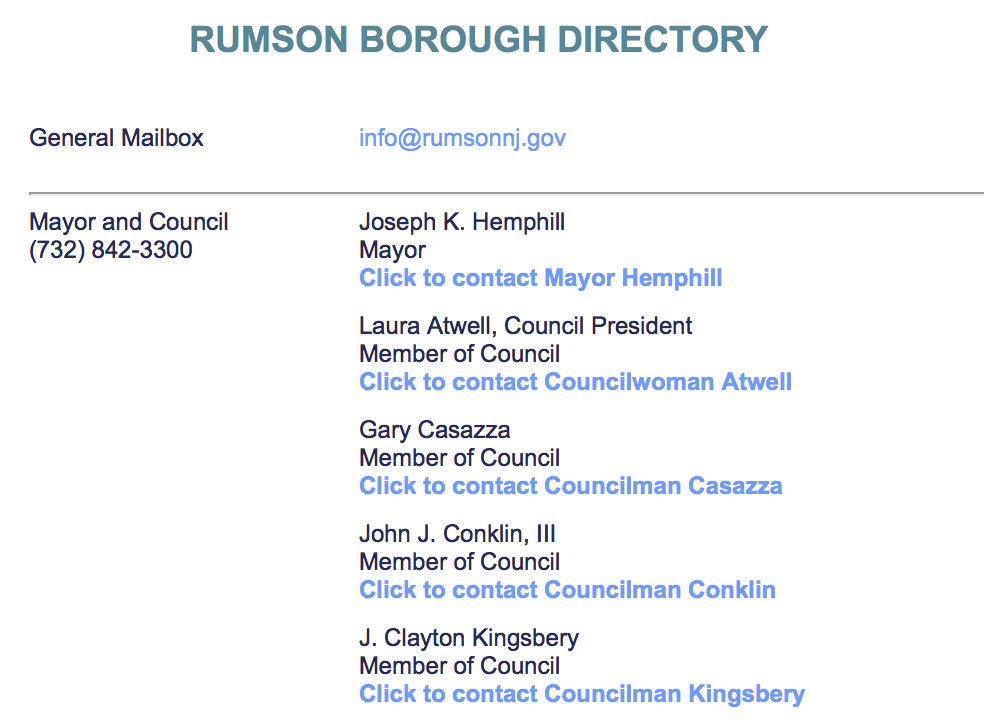
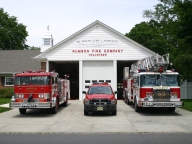

 Rumson NJ 07760
Rumson NJ 07760